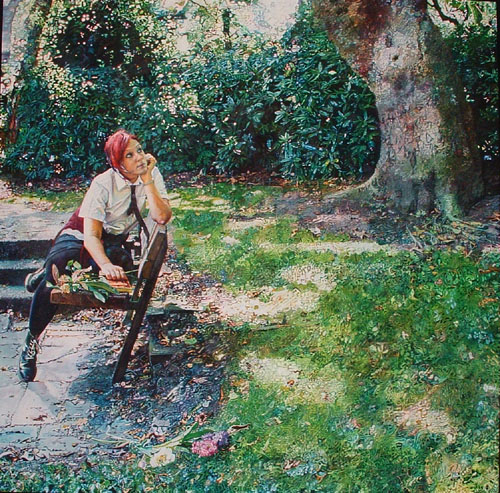
We rule the school
I can remember walking through the schoolís sprawling grounds, that stretched away across the playing fields, and into the distance. All that space, interrupted only by the shrieks and hoots from the playground, and the remote drone of traffic crawling by outside the school walls. All that space, and we were still slowly suffocating, restricted and imprisoned by those wrought-iron gates.
Somewhere along the groundís perimeters, a copse of trees was hunched together, dappled in light that had somehow managed to filter through the thick overhead branches. Elsewhere, shadows clustered, pooling into darkness; a harsh contrast from the benevolent summer sunshine that beamed indulgently down at those outside. Violently uprooted, wrestled from their previously allocated prestigious positions, the saplings here now stood a silent and sombre sentry. Isolated and hidden from view, some had withered and died, ironically mirroring the lives of those they had been planted in remembrance of. Now, their plaques tarnished or discarded altogether, the names were forgotten. Erased from the accepted, respectable version of events published as a cold footnote in the schoolís history, the names were banished instead to classroom folklore; whispered feverishly and mispronounced on the lips of the wide-eyed first-years daring each other to dart skittishly into the dejected thicket.
Silence had settled there now; an oppressive blanket, thick with significance, that lay heavily on any intrusive presence. And the lull that rested there dissented so vastly from the pyretic rumours that had not long ago blazed through the school like wildfire; Chinese whispers of overdoses, slashed wrists, or lifeless forms found suspended and pendulous in somebodyís cellar.
Whilst the suicides were never a frequent occurrence, that they even happened at all caused the obsessive reaction of an epidemic. Each one that had slipped through the cracks was equally evangelised or demonised, depending on whom you spoke to in the muttering groups congregated in the dusty classrooms during breaks. And the friends of those departed were severed from usual circles, set apart by the stigmata of grief; their subdued manner and ruined mascara ruthlessly dissected by keen observers. Elsewhere, blank faces of austere teachers reported at assembly that matters would continue as normal. They should have realised acknowledgement and some kind of transformation of affairs could have meant salvation for those already perilously close to the abyss, but any change in schedule was viewed as too much upheaval, and the idea was dismissed. So the incidents passed, and the trees appeared overnight; tokens of admission and reproachful reminders.
Then, there was an occasion deemed worthy of far more attention and gaiety. A school visit by a local dignitary, or an inspection by the board of governors; the details were irrelevant. However, one day, in a hushed conference in the Headís office, it was resolved that the trees now lining the central drive were an embarrassment; an ostentatious, unwanted talking point that would speak volumes of excessive measures of pressure, hurt, and heartbreak. Without ceremony, the saplings were relegated to the secluded, obscure retreat they now haunted.
In offices across the town, dutiful parents, blinded by the desperation in their own neatly compartmentalized lives, compliantly worked long hours to pay the schoolís extravagant fees every term. Back in those draughty halls, their children were gradually destroyed. Ideals dissolved into dust as jaded teachers fed us defeatism as intravenously and inevitably as the sugar-coated toxins that poisoned us from every fast-food outlet. Any rebellion was dismissed as naÔve raging against the dying of the light, and in detention, endless minutes dragged by while we seethed with resentment. Ugly, abrasive uniforms condemned all symptoms of individuality, generating strict formulaic carbon copies of boys and girls, trained up for lifetimes of concealing neuroses and insecurity behind an apparently immaculate exterior.
Later on, though, in the springtime sunshine when time had gone by, coarse skirts were daringly rolled up, exposing milk-bottle flesh for the first time in months, and the allure of summer glimmered tantalisingly on the horizon, swollen with promise. Idle chatter flourished of the forthcoming holidays, and, for the most part, the tragedies seemed bound to another era, best left forgotten.
But across the grounds, past the playing field where competing school heartthrobs duelled roguishly to a soundtrack of girlish giggles, pealing from the sidelines, a forsaken glen endured. Overgrown and brooding, light trickled through the branches as the syrupy silence continued unbroken. Here, far away from the clamouring tirades outside, a sad sentinel remembered those tragic times, while all around them the blossoms fell like tears.
. . . . . . . . . .
Text by Janie Doll, painting by David Hancock "We rule the school" acrylic on canvas, 5 ft 6 x 5 ft 6, 2004.